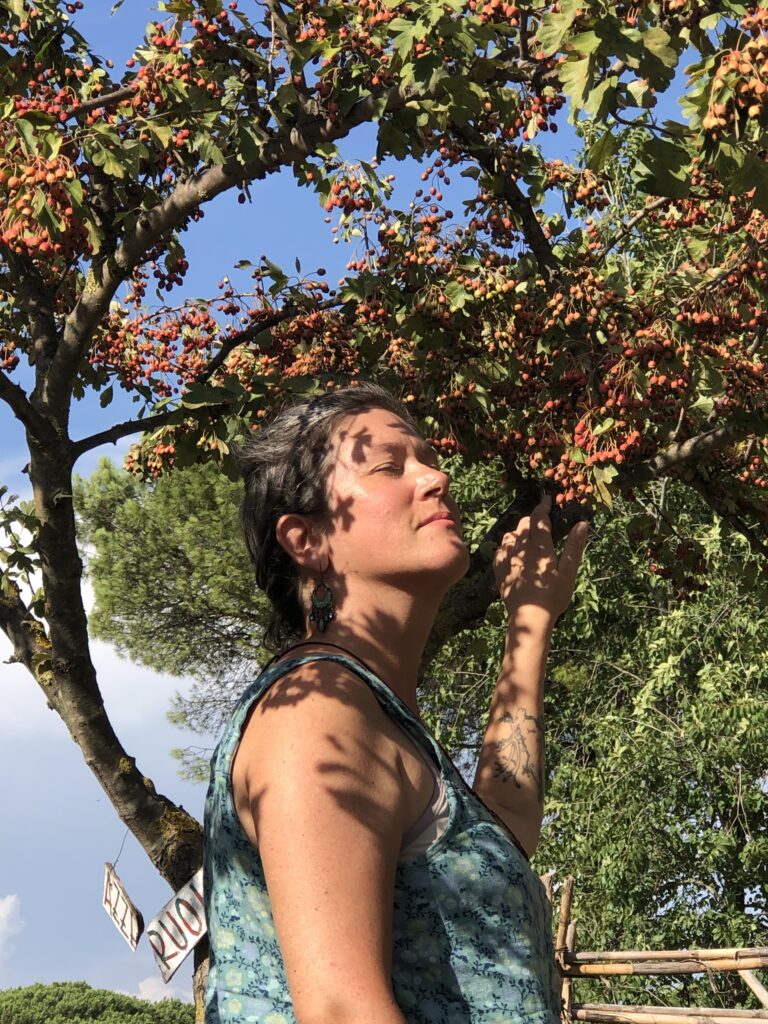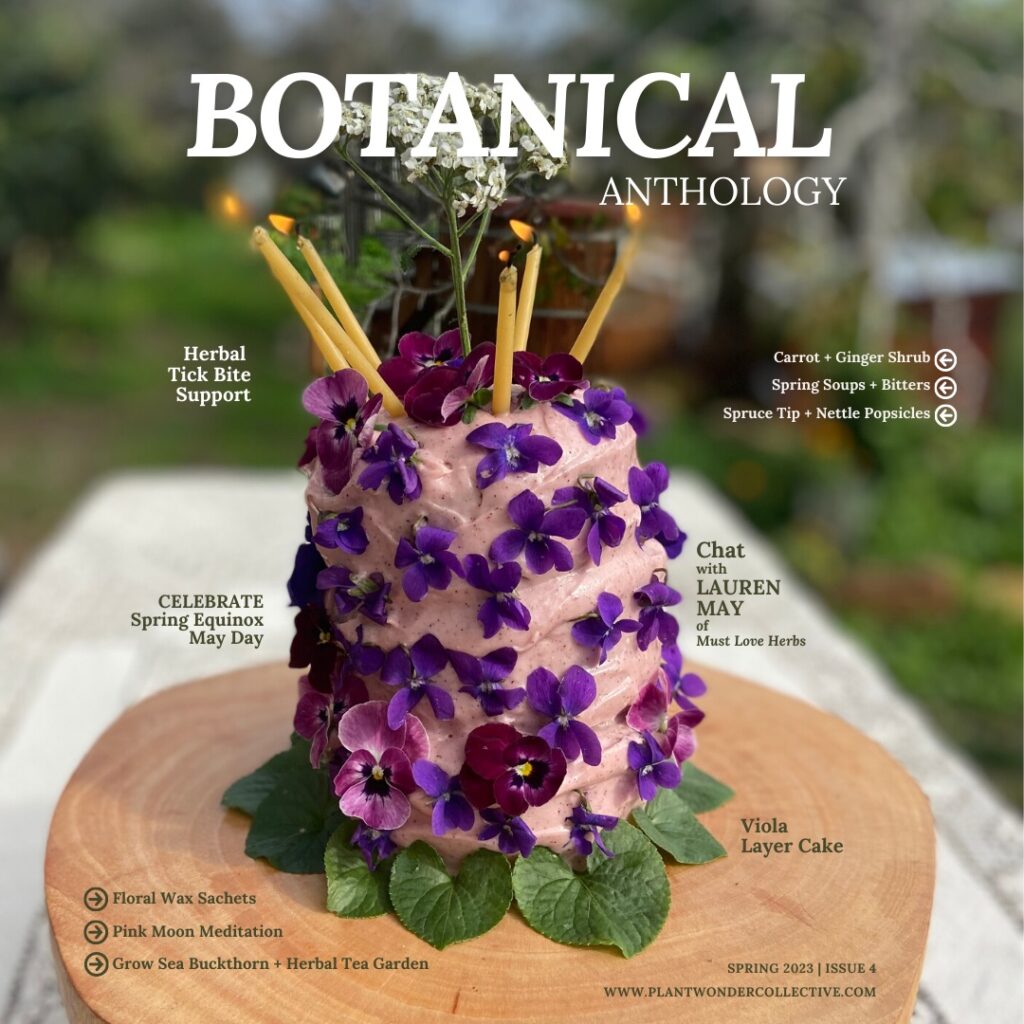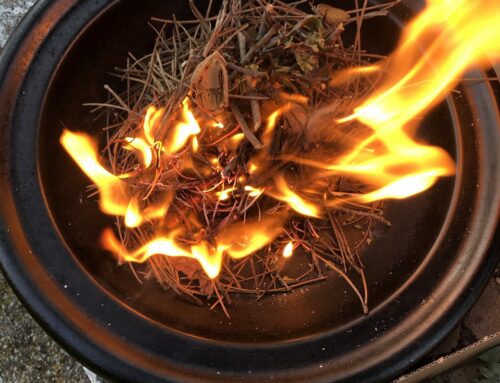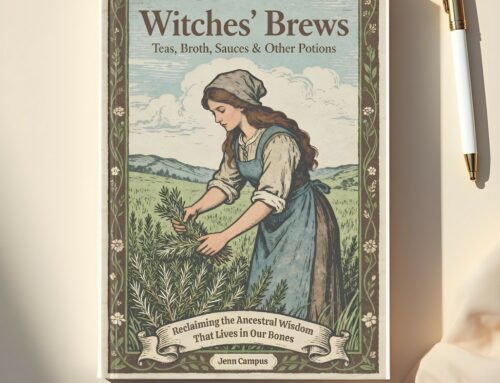
(Hawthorn tree, May, Rome, Italy)
Blackthorn and Hawthorn are considered thresholds to the Otherworld, fiercely guarded by fairies. Their thorny nature reveals the gifts of these sister plants, inviting us to use respect when working with them while acknowledging the spirits residing within them.
In European folklore, Blackthorn and Hawthorn are sister plants, with Blackthorn representing the dark half of the year and Hawthorn the light. However, we could alternately call them sister harbingers of spring, as they are some of the first flowering plants.
Blackthorn, flowering first, symbolizes Imbolc and the murmurings of spring, while Hawthorn, which blooms several weeks later, symbolizes Beltane. Both thorny plants are common hedge plants, weaving their white blossomed branches amongst wild roses. A common European folk belief, especially in Britain and the Isles, is that magic is afoot where Blackthorn and Hawthorn grow together.
Blackthorn and Hawthorn figure prominently in folktales and fables. Often associated with fairies or witches, one must go to or beyond the hedge to seek their magic. This solitary, liminal, not entirely human figure, residing right on the border of the hedge with one foot in the human world and one in the Otherworld, is often there to guide the way.
These stories remind us that we are part of a much larger web of life. Sometimes we must seek the knowledge of non-human kin to answer life’s most confounding riddles. It might be dangerous, and we’ll probably bring back scars, but these relationships and the knowledge that comes from them are invaluable to our human lives.
Beautiful Blackthorn

(Beautiful Blackthorn tree, early spring, Sardinia, Italy)
Straif, the ancient Irish word for Blackthorn, is believed to be the origin of the word strife. Blackthorn trees are inhabited by spiky fairy folk known as the Lunantisidhe or moon fairies, who will curse you if you cut their branches at Samhain or Beltane. In folklore, Blackthorn wood is used for witches’ wands and staffs. They might carve the runic symbol for “thorn” on their magical implements for protection.
Magically, Blackthorn can help one overcome obstacles that cannot be avoided but must be faced and dealt with. Like their bitter sloe berries ripening after the frost, Blackthorn challenges one to make challenging situations work, rewarding us with unexpected sweetness.
Heavenly Hawthorn
Hawthorn blooms several weeks after Blackthorn, closer to Beltane. Its blooms are associated with the Goddess Brigid. In Celtic lore, it was said to be guarded by fairies and have the power to mend broken hearts. As part of the same family as roses, Hawthorn has many of the same properties as roses. Plants in this family are all about giving and receiving love while maintaining firm boundaries.

(Hawthorn blossoms, April, Sardinia, Italy)
Hawthorns are also associated in ballads and poems with fairy encounters. There are many taboos, especially in Scotland, for cutting branches from Hawthorn. If one does not abide by these rules, the fairies might steal you away to Otherworld.
In Britain, the Hawthorn is considered a tree of love. It is the primary flower referenced in the tradition of medieval knights and ladies riding out ‘a-maying’ on the first morning of May. At Beltane, people often hang Hawthorn branches outside their homes to repel negative energy.
Respectfully foraging brambles to become part of a cake or syrup for your home apothecary ultimately comes with a physical exchange. Inevitably when you forage these little jeweled fruits, you’re going to bleed, both human and berry tasting each other.
In many European pre-Christian cultures, the fairies, or elves as they are often known, were closely related to Ancestors. One often finds Hawthorn at sacred sites. In Britain and the Isles, they are especially fond of holy wells. In Sardinia, you almost always see them near megalithic sites, especially the Tomba dei giganti, or giant’s tombs – sites dedicated to Ancestral worship and passages to the underworld, much like burial cairns in Scotland and Ireland.
Hedge Magic
Blackthorn and Hawthorn are both plants you commonly find in a traditional hedge. Hedges have been used since neolithic times to enclose land for growing grain or keeping livestock. The hedgerow has another purpose, acting as a plant-kin protector meant to keep what lies within its borders from harm.
A Hedge is both a physical place while simultaneously acting as a portal to the Otherworld. Those who walk the hedge path are said to have one foot in each world. They easily travel between and work with the spirits of each place.
Hedge witches are skilled at channeling, meditation, and trance journeys. They act as an intermediary between the spirit realms and the material realm. So, although Hedge witches are familiar with herbs and plants, the true meaning behind the name comes from the symbology of the hedge in the past – a liminal place for those who dare to tread seeking answers.
Sister Thorns in Fairy Tales
Blackthorn and Hawthorn figure prominently in European folktales and fables. Often associated with fairies or witches, one must go to or beyond the hedge to seek their magic. This solitary, liminal, not entirely human figure, residing right on the border of the hedge with one foot in the human world and one in the Otherworld, is often there to guide the way.
Therefore, many taboos are associated with cutting branches from either plant, especially at Beltane and Samhain.
Thorns & Ancestors
Our Ancestors likely foraged for some kind of berry, which makes working with berries part of our heritage and traditional knowledge. Therefore, this simple offering of blood that naturally occurs with foraging them encompasses a larger circle of relating to those outside the confines of our world.
This gift exchange is a powerful reminder of our relationship with other beings who inhabit this world and the in-between spaces with us, and the interactions we encounter every day when we tune into their presence.
Perhaps when it comes to these thorny beings, Blackthorn and Hawthorn, it is easier to notice their unique spirits as compared to other plants. Maybe because they are so tangible, they are therefore symbolized by their association with fairies, one of the most well-known spirits of the land- Fairies.
To use the magic of these plants, the simplest recipe is to make an infused gin. Sloe gin is a common use for blackthorn berries, known as sloes. But you could also add haws, the berries of the hawthorn plant. Simply eyeball your amounts, allowing about 1/3 of your container to be berries and the rest gin. Let your mixture infuse for about a month, and enjoy.
This article, entitled Thorn Folklore (which is an excerpt from my book, Witches’ Brews—Teas, Sauces & Other Potions: Old World Lore & Recipes from Hearth & Hedge), can be found in the Spring 2023 edition of Botanical Anthology.

I am excited to join 40+ herbalists, kitchen witches, homesteaders, and matriarchs who have contributed their incredible plant knowledge to the Spring 2023 edition of Botanical Anthology created by the Plant Wonder Collective. (Available March 20, 2023)
What is Botanical Anthology?
It’s a plant lover’s dream. A seasonal, plant centered digital quarterly publication bringing you over 55 articles to incorporate herbs in your kitchen, apothecary, spring foraging and gardening, crafts, and celebrations.
Botanical Anthology is the brainchild of Plant Wonder Collective. It’s a self-published publication that directly supports creators (like me!) writing about what they know and love.
I’ve written for both independent and corporate publications and I love writing for Botanical Anthology because contributors are involved in much of the process, and we benefit directly from its success. The more copies sold, the more we make!
What’s Inside Botanical Anthology?
In the Spring 2023 edition you’ll find 20+ recipes both for your kitchen and home apothecary. You’ll also find foraging guides for some of your favorite springtime plants. Plus, folklore, crafts and ways to celebrate spring, inspired by the seasonal plants.
Until March 29, 2023 you will also receive a FREE 35-page booklet All About Nettles with your purchase!
If you are one of my Patreon members or Newsletter subscribers, look out for a coupon code coming your way sometime between March 20 & March 22, 2023!
Related Posts:
Late Autumn Old World Fruits: Quince (part 1)
The Earth is Our Mother: (Earth, Arbor & Yggdrasil Day)






Leave a Reply